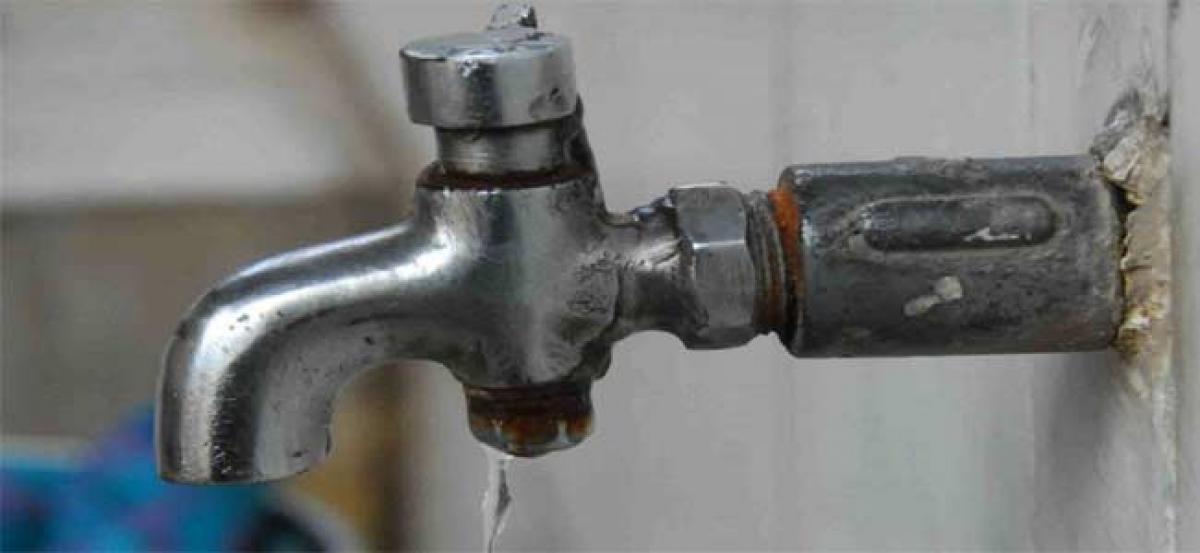Live
- ‘Get Set, Grow Summit 2024’ Focuses on Digital Detox for Families
- Stokes motivates his team to put in extra effort, says England pacer Potts
- From overcoming setbacks to leading India in U19 Women’s Asia Cup, Niki Prasad's amazing journey
- Driving Enterprise Security: Inside Venkata Reddy Thummala’s Leadership Journey
- Constitution debate: PM Modi hails 'Nari Shakti'; makes strong pitch for 'United Bharat’
- Abhijeet Bhardwaj: Revolutionizing Enterprise Analytics with Innovation and Expertise
- Bihar: Inquiry initiated against principal who went to buy veggies during school hours
- Press Sri Lankan Prez for release of Indian fishermen: TN Cong MP to EAM Jaishankar
- TN: DMK postpones executive meet due to heavy rains & Parliament session
- Porous silicon oxide electrodes can fix durability issues in batteries: Researchers
Just In

As the proverbial Indian summer sets in and taps dry up across large swathes of the country, India faces an acute shortage of safe and sustainable water
As the proverbial Indian summer sets in and taps dry up across large swathes of the country, India faces an acute shortage of safe and sustainable water, specifically groundwater, a crisis that will exacerbate with factors like indiscriminate use and climate change, warn experts.
The issue of water sustainability for the years to come centres around critical water sources such as reservoirs and groundwater.
Last week, the World Resources Institute (WRI), basing its findings on a new early warning satellite system, warned that shrinking reservoirs in India could result in water taps going completely dry in the country. Experts also point to research establishing the criticality of groundwater for India's agriculture dependent people.
"Almost 70-80% of the population of South Asia (including India) is dependent on groundwater for drinking and agricultural irrigation," said leading IIT Kharagpur hydrogeologist Abhijit Mukherjee.
The northern and eastern parts lose groundwater at rates of 8 and 5 cubic km each year, respectively, he added.
According to a 2012 World Bank report, India is the largest user of groundwater in the world. It uses an estimated 230 cubic km of groundwater per year - over a quarter of the global total.
India's huge groundwater-dependent population, uncertain climate-reliant recharge processes and indiscriminate land use changes with urbanization are among the many factors that have rendered the Indian groundwater scenario to become a global paradigm for water scarcity, for both quantity and quality , Mukherjee told PTI.
He also blamed trans-boundary upstream water sources and archaic irrigation methods for the water shortage.
India has already started facing acute safe and sustainable water shortage, specifically that of groundwater. If proper measures are not taken on an immediate basis, this would exponentially increase, Mukherjee, who is from the Department of Geology & Geophysics School of Environmental Science and Engineering, added.
The indiscriminate use of rivers and other surface-water bodies in many areas for disposal of sewage and industrial waste has rendered them non-potable, Mukherjee said.
Ganga water, in his view, is the worst of the lot with heavy pollutant load of contaminants like heavy metals sourced from industrial discharge, sewage and open-defecation waste, as well as pesticides and other organic pollutants from agricultural activities.
A L Ramanathan from the School of Environmental Sciences, Jawaharlal Nehru University (JNU) in New Delhi, agreed with him.
Water shortage is a very serious issue facing India and its ramifications will be felt in the coming years, he said, citing excess water pumping, non implementation of restriction-rules, and unlawful drilling of wells among other factors for the situation.
The situation can be reversed, the experts said.
The crisis can be tackled by restoring and enhancing groundwater recharge areas, stopping polluted water from recharging groundwater, rainwater and roof top harvesting and the restoration of ponds, lakes and other river systems, Ramanathan said.
"Water is a national wealth and should come under Central government and not be a state matter," he said.
Mukherjee, who is editor and a primary author of a new book, "Groundwater of South Asia , which presents recent findings from the South Asian region, noted that the government is contemplating several measures, many of them short to medium term remedies.
However, for more detailed planning, scientifically-prudent, adaptive groundwater management strategies are immediately required to secure, sustain and rejuvenate the accessible, residual, unpolluted groundwater through times of changing socio-economic needs, he said.
Recent studies, he added, do show scenarios of replenishment, potentially caused by policy interventions.
"Thus, proper, pervasive groundwater governance may optimistically lead to possibilities of transforming the country from a 'groundwater-deficient' to 'groundwater sufficient' nation, and providing sustainable water availability for about one-fifth of the global population, in not-so-far future, Mukherjee said.
South Asia, comprising India, Afghanistan, Bangladesh, Bhutan, Myanmar, Nepal, Pakistan and Sri Lanka, is the most populous and densely populated region of the world. It occupies about four% of the world's land area but supports nearly 25% of the global population.

© 2024 Hyderabad Media House Limited/The Hans India. All rights reserved. Powered by hocalwire.com







